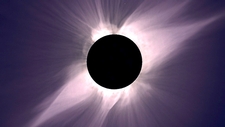Light Energy
Readiness

TEKS Objective
Explore the uses of energy including mechanical, light, thermal, electrical, and sound energy.
Essential Understanding
The student knows that energy occurs in many forms and can be observed in cycles, patterns, and systems.
Science Background
What is Light Energy? Biofuelswatch.com (website) - Article explains characteristics of light and how we perceive this energy form. Includes links to related articles.
What is Light Energy?
Biofuelswatch.com
The Electromagnetic Spectrum: NASA (website) - Concise, illustrated synopsis of the electromagnetic spectrum: radio waves, microwaves, infrared, visible light, ultraviolet, x-rays and gamma rays.
The Electromagnetic Spectrum
NASA, http://science.hq.nasa.gov
Signature Lesson
Enlightening Explorations, Part II: Utah Education Network (website) - Students investigate and describe how light can be produced, reflected, refracted and separated into its component colors.
Enlightening Explorations, Part II
Utah Education Network, http://www.uen.org
- Supporting Lessons
- Extensions
- Assessment Ideas
- Literature Connections
- Related
TEKS - Additional Resources
Supporting Lessons
Characteristics of Light, Light Travels in a Straight Line: Minnesota Science Teachers Education Page (website) - Simple investigation that compares lightwaves to soundwaves, and illustrates that light travels in a straight line.
Splitting Light: CSIRO (website) - Use a water-filled glass to separate sunlight into its component “rainbow” colors.
Elaboration Lessons and Extensions
Reflection and Refraction: Algodoo (website) - Students investigate reflection and refraction of light, and the impact of different materials on a beam of light.
Reflection and Refraction
Algodoo, www.algodoo.com
Edison and the Light Bulb: Science NetLinks (website) - This lesson introduces students to the world of technology and inventions, helping them to understand the enormous impact of scientists and inventors in society.
Edison and the Light Bulb
Science NetLinks, http://sciencenetlinks.com
Assessment Ideas
Reflection & Refraction: My Schoolhouse (website) - Illustrated explanation of reflection and refraction, suitable for young students. Use the assessment section at the end to test your students’ knowledge.
Reflection & Refraction
My Schoolhouse, http://www.myschoolhouse.com
Literature Connections
Light (Energy in Action). Mahaney, I. (ISBN-13: 978-1404221857)
My Light. Bang, M. (ISBN-13: 978-0439489614)
Mr. Slaptail’s Curious Contraption. Tharp, B, Dresden, J, and Moreno, N. (ISBN-13: 978-1888997347)
Day Light, Night Light: Where Light Comes From. Branley, Franklyn (ISBN-13: 978-0064451710)
Rainbow and You. Krupp, Edwin (ISBN-13: 978-0688156015)
Additional Resources
Solar Energy: Energy Kids (website) - Students learn about ways to convert solar energy into other forms of energy, such as heat and electricity.
Solar Energy
Energy Kids, www.eia.gov
Energy: TeachEngineering (website) - A series of nine lessons covering a range of energy types including electrical, light, sound and thermal.
Energy
TeachEngineering, www.teachengineering.org
Sensing Energy: Science NetLinks (website) - Students perform simple experiments to investigate unseen energy produced by the sun.
TEKS Navigation
Grade 5
Need Assistance?
If you need help or have a question please use the links below to help resolve your problem.

Comments